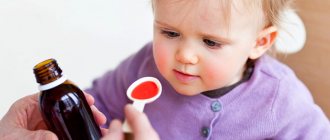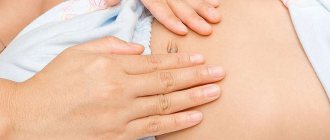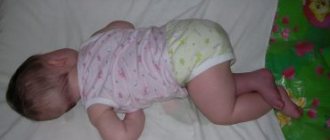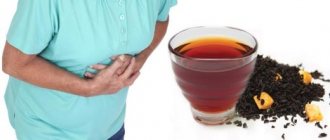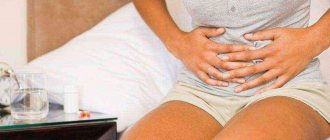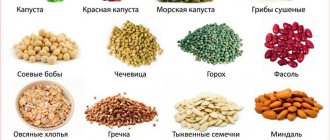Fever in a child is a fairly common occurrence. This is facilitated by many factors, including colds, teething, sore throat, bronchitis, etc. Often, elevated temperature can cause side symptoms such as vomiting or diarrhea. Why is this happening? What causes loose stools at elevated temperatures, what should parents do in this case, and what should you pay attention to first.
Causes
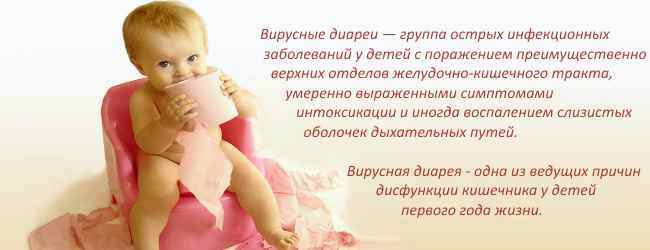
1. Infectious diarrhea
This type of disease is often called “dirty hands disease.” Seven month old babies constantly put everything in their mouth. As a result, the baby may experience a proliferation of pathogenic microorganisms in the intestines. It is this intestinal infection that provokes diarrhea in a seven-month-old child, causing acute diarrhea. Intoxication of the body occurs, vomiting, high fever, and weakness occur.
2. Dyspepsia
In this case, intestinal upset may appear in the baby for several reasons:
- in case of malnutrition;
- if parents often give the baby sweets;
- if there is an excess amount of fruit in the food;
- if the baby overeats;
- if there is a change in diet;
- new dishes are added to the diet;
- if the mother abruptly stops breastfeeding;
- if the child is abruptly introduced to a large volume of complementary foods.
3. Dysbacteriosis
Due to a violation of the microflora in the child’s intestines, abundant loose stools appear. In this case, diarrhea may appear frequently, sometimes giving way to constipation. Most often it passes without fever. The child experiences pain in the tummy, has increased gas production, and the stool may have a green tint and an unpleasant putrid odor.
4. Food intolerance
Many mothers introduce cow's milk into their 7-month-old baby's diet. Quite often, when using it, most babies experience diarrhea due to poor lactose tolerance. It is enough for an infant to drink a small amount of such milk or eat a formula based on it to provoke diarrhea. Diarrhea can be profuse, foamy, brown in color and with an unpleasant sour odor.
Also, the appearance of diarrhea is possible with the introduction of cereal porridges into the diet. They contain gluten protein, which some children do not tolerate well. Diarrhea in this case is foamy and foul-smelling.
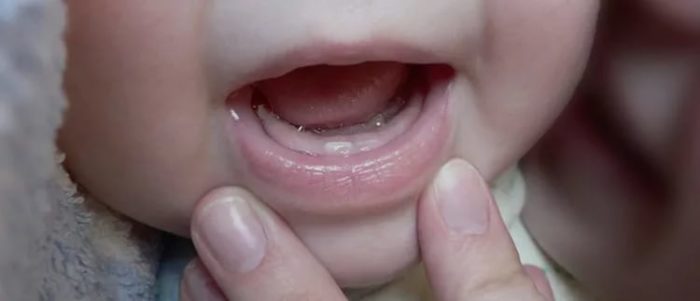
Teething also affects the functioning of the stomach
There are also a number of other reasons that provoke frequent loose stools:
- teething;
- incorrect or delayed formation of the gastrointestinal tract;
- consumption of low-quality products;
- the baby's consumption of fruits and vegetables that have a laxative effect;
- taking certain medications;
- nervous disorders;
- inflammation of the mucous membrane, intestines or esophagus;
- food allergies.
Interruptions in bowel movements that cause diarrhea should not last more than 2 days. It is important to monitor your baby's stool. Their color and consistency may indicate the cause of the disorder or the presence of a particular disease. It is very important that the disease occurs without fever, and that there is no blood in the stool. If a child has to go to the potty up to 7 times or more, and the stool is foamy, abundant, and green, parents should sound the alarm. These are dangerous signs of illness that require medical attention.
general information
Diarrhea is a condition in which the consistency of stool changes, as well as the frequency of bowel movements.
Depending on the degree of the disease, these violations can be minor or very dangerous (more than 10 times a day).
Abundant loose stools lead to persistent disturbances in the digestive process and cause an imbalance in the fluid balance in the body.
There are several types of diarrhea.
| View | Characteristic |
| Osmotic | There is a disturbance in the absorption of nutrients. As a result, disruptions occur in the formation of a bolus of digested food and the process of its movement through the intestines. At the same time, local pressure in the intestines increases, which contributes to water retention. |
| Hyperkinetic | It develops as a result of impaired intestinal motility, irritation of the mucous membrane of the organ, and hormonal imbalances. |
| Exudative | The development of this form of the disease is facilitated by the presence of inflammation in the intestinal mucosa, as well as disturbances in blood flow, as a result of which excess fluid from the circulatory system penetrates into the intestinal cavity. |
| Secretory | As a result of viral or bacterial infections, a metabolic disorder develops, in which a large amount of fluid penetrates into the intestinal cavity. This form is considered dangerous, since it is very difficult to stop loose stools; even if the child refuses to eat, diarrhea still continues. In this case, the amount of feces decreases, while water continues to be removed from the body during bowel movements. |
Diarrhea, most often, does not manifest itself as an independent disease; it serves as a symptom of other diseases that may have a different nature.
Symptoms

Do not delay visiting the doctor if your baby has a high fever
The most basic symptoms are:
- pain in the abdomen and stomach area;
- stool more than 5 times a day;
- loss of appetite;
- weakness and fatigue;
- insomnia;
- headache;
- dizziness;
- pale complexion;
- dry mouth;
- itching or pain in the anus;
- diarrhea without fever or with high fever.
The more symptoms, the more dangerous the disease. If bloody discharge appears in the stool and the baby has a high temperature, you must immediately call an ambulance.
Treatment methods for infants
Treatment of a child involves eliminating the root cause of this condition. Treatment of the underlying disease will help cope with diarrhea, reduce fever and get rid of other pathological signs.
At the same time, medications are prescribed for symptomatic treatment to prevent dehydration and normalize the functioning of the gastrointestinal tract:
- Smecta, Polysorb, Polyphepan, Enterosgel - will help stop diarrhea and remove toxins from the body.
- Regidron solution will help replenish lost fluid and normalize the water-salt balance.
- Ibuprofen or Paracetamol in age-appropriate dosages are prescribed to reduce high fever.
- Enterofuril or Stopdiar are effective intestinal antiseptics prescribed for infectious lesions.
- Primadophilus contains lactobacilli, which are important for the normalization of intestinal microflora.
- Creon or Microzim are enzymatic preparations to improve digestive processes.
- Preparations based on simethicone will help cope with increased gas formation and abdominal pain.
- Hilak forte normalizes the balance of bacteria in the intestines.
- Enterol has an antimicrobial effect, stops diarrhea, and helps normalize the balance of intestinal microflora.
Recovery is possible only after finding out why the baby has diarrhea with fever, and carrying out therapeutic actions in accordance with the diagnostic results. It is undesirable to use traditional methods in young children. Therapy should be carried out under the strict supervision of a pediatrician. Proper care of the baby, following a breastfeeding diet and following all medical prescriptions will help you quickly cope with the disease and improve your well-being.
What is the danger of the disease
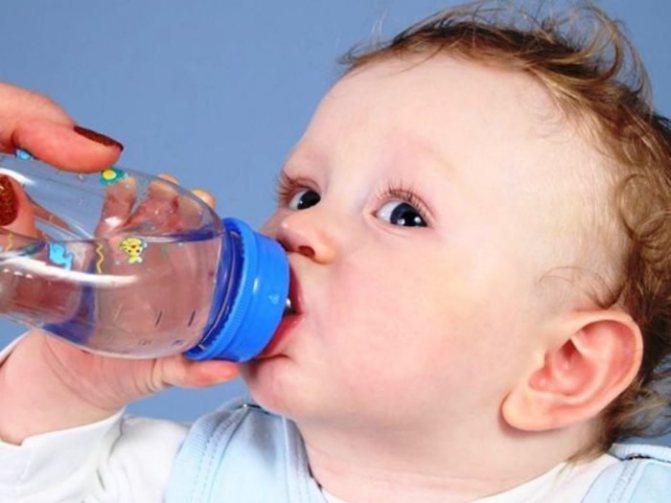
It is important to give your child water more often if they have diarrhea to prevent dehydration.
The main danger of diarrhea is severe dehydration. Together with loose stool, a large amount of water and nutrients are removed from the body, as a result of which the metabolism in children is disrupted. With each bowel movement of a 7-month-old baby with diarrhea, about 100 grams of fluid are removed from the body. The more often the stool, the more fluid leaves the child's body.
During illness, it is very important not only to monitor the condition of the stool, but also the baby’s mucous membranes, which dry out and begin to crack. The child may have circles under his eyes, he may be thirsty, and he is constantly sleepy. But if urine is released in very small quantities when you go to the toilet, and its color has become rich, brown, a doctor’s help is necessary.
At this age, dehydration of the body is very dangerous, since as a result of loss of salts, electrolytic metabolism is disrupted. And even if the disease occurs without fever, there may be a risk of complications, and even cardiac arrest.
If diarrhea is associated with infection, hospitalization is required.
Risk of complications
A timely reaction, correct diagnosis and competent treatment are the key to recovery. But if time was missed, then there is a risk of complications.
The most common complications of diarrhea and high fever in an infant are convulsions, severe dehydration requiring hospitalization, loss of consciousness, rectal prolapse with advanced dysentery, lactase deficiency (after diarrhea and fever in a child under 1 year old), dysbiosis caused by taking antibiotics.
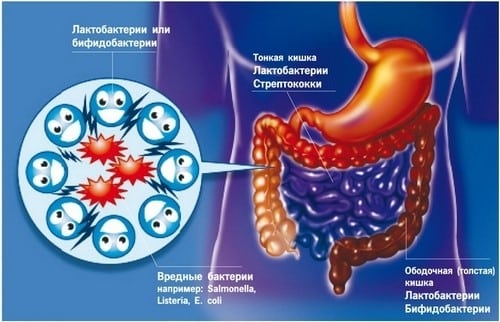
In rare cases, death can occur.
Diagnostics
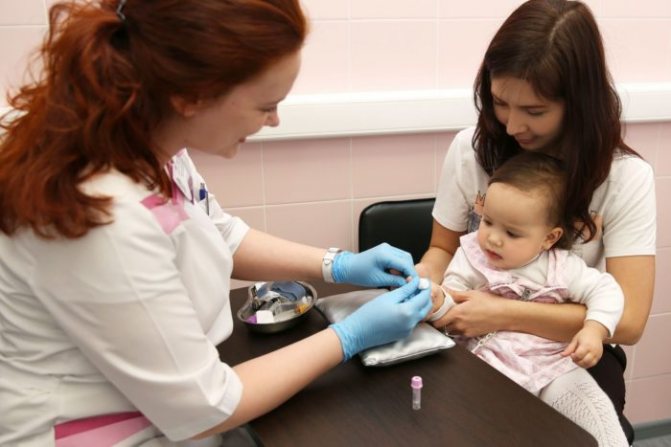
It is better to do a blood test in a clinic where there are special children's needles. This way there will be less stress for the child.
In order to select effective treatment, it is necessary to carry out diagnostic procedures.
- Be sure to take tests to detect parasites in the body and dysbacteriosis.
- In case of long-term illness with profuse stool, a coprogram may be prescribed.
- A general blood test is required.
- Vomit and feces are taken for bacterial culture.
- It is also possible to examine the abdominal cavity using ultrasound.
- If there are pathological diseases, the rectum is examined using sigmoidoscopy.
First aid
Below are the actions that you need to take first and what you should not do if your child has a fever and diarrhea. Necessary:
- call a doctor at home;
- until the true cause of watery diarrhea is understood, isolate the baby to prevent the infection from spreading further to other people;
- Carry out a careful examination for the presence of other symptoms;
- Give, if desired, enterosorbents such as activated carbon, Smecta or Enterosgel.
For high fever and diarrhea, you can take Enterosgel
No need:
- panic;
- give antibiotics;
- bring down the temperature until the doctor arrives (see also: what temperature should be brought down in a baby?).
In cases where the wait for medical help is long, and the baby’s temperature is 38 °C or more, you can resort to drugs with paracetamol. For one-month-old babies and children under 10-11 months, it is better to use candles; children 1-2 years and older can be given syrup.
What parents can do
If you have loose stools without any pathological changes, it is necessary to prevent dehydration. What can be given to the baby in this case?
1. Parents should give their child as much liquid as possible: bottled without gases or boiled water.
2. If you have diarrhea without fever, you can start taking special solutions:
- Glucosolan;
- Gastrolit;
- Oralit;
- Enterodesis;
- Regidrona.
The child should drink them in small but often repeated doses.
3. Smecta will help stop diarrhea.
4. To cleanse the intestines and remove toxins, you can give your child activated charcoal.
Reasons for the development of the disease
Various unfavorable factors can lead to diarrhea:
- Drinking water from contaminated sources that has not undergone the necessary heat treatment (boiling).
- Allergic reactions (to food, medications, other irritant substances).
- Lactase deficiency (when the lactose contained in artificial formulas for feeding is not absorbed by the child’s body).
- Infectious, viral diseases , helminthic infestations.
- Frequent stress , emotional fatigue.
- Inflammatory processes occurring on the intestinal mucosa.
- Crohn's disease.
- Diseases of the gastrointestinal tract .
- Oncological tumors in the intestinal area.
- Disturbances in the absorption of nutrients and liquids.
These symptoms are typical for older children; the reasons for the appearance of pathology in infants are somewhat different:
- Infectious diseases caused by the penetration of microorganisms such as rotavirus, salmonella, dysentery bacillus.
- Improper nutrition (with breastfeeding, the baby’s stool is influenced by the mother’s diet, with artificial feeding, the quality of the milk formula and products used for complementary feeding).
- Taking medications , in particular strong antibiotics.
- Anomalies in the development of the organs of the digestive system (in young children there is immaturity of these organs when they cannot fully cope with their function).
- Poisoning of a child with food, chemicals.
What can you give your child for a headache? Find out about this from our article.
What does the doctor prescribe
1. If a child has a fever, use suppositories, suspensions, tablets that contain paracetamol. If the disease occurs without fever, antipyretics are not needed.
2. Sorbents are prescribed that will help remove toxins from the body. This:
- Smecta;
- Polyphepan;
- Polysorb;
- Enterosgel.
3. For diarrhea, one of the following medications is prescribed:
- Tanalbin;
- Diarol;
- Bismuth.
4. If dysbiosis is detected, the appointment is as follows:
- Bifidiumbacterin;
- Linux;
- Bificol;
- Lactobacterin;
- Acipol;
- Bifiform.
5. If diarrhea is associated with intestinal infections:
- Furazolidone;
- Gentamicin;
- Rifampicin;
- Nevigramon.
Treating diarrhea in children with antibiotics yourself means exposing them to great risk.
6. Enzyme therapy is possible. Then the doctor may prescribe one of the following medications;
- Pancreatin;
- Festal;
- Mezim;
- Digesal.
7. For pain relief from spasms:
- Papaverine;
- No-shpa.
8. If there is colic and flatulence:
- Sub-simplex;
- Espumisan.
green diarrhea and fever in a child
October 27, 2020 (2 years+3 months)
- From October 15 to October 19, we spent time in the hospital. It all started like a normal ARVI. First, Igor fell ill. A couple of days later, Nikita began to sneeze, his throat turned red, and sniffles appeared. She treated as usual: Tantum Verde, Miramistin, Nazivin at night, plenty of fluids, chamomile, compotes. (By the way, I also felt weak and achy in my body. I bought amiksin at the pharmacy. It helped a lot, everything went away. I was able to stand on my own feet and help the child recover). On the 3rd day a cough appeared, I added rubbing, milk with soda and honey, and mineral water. And then... sometime in the evening, diarrhea began. Gave me some smecta. I thought it was from the compotes with dried fruits that Nikita drank constantly. The next day the diarrhea did not go away - she gave me smecta again. At night the temperature rose to 39.2... They knocked it down, alternating candles and suspensions. The next day, the snot and everything that accompanies a cold went away, but diarrhea remained. At night he vomited and had a fever again. The temperature was brought down for 4 hours - then it rose again. An ambulance was called. At half past ten the doctor arrived. She said that we had ARVI and an intestinal infection, prescribed further treatment for ARVI and added enterofuril, smecta... The night was difficult. Igor ran to the pharmacy twice... We practically didn’t sleep. In the morning the temperature is 39.5. An ambulance was called. They suggested going to the hospital. Of course, we agreed. They took me to the 9th Children's City Clinical Hospital, the 5th Infectious Diseases Department. The conditions there... Come on... Well, at least they weren’t lying in the corridor, like many who arrived after us. The wards are full. The food is simply disgusting. They ate simply so as not to die of hunger. The department itself is old, dirty, still Soviet-style. As far as we know, other buildings have undergone recent renovations, but ours has not yet been completed. This is not how I imagined the infectious diseases department. But okay. The staff is responsive, but, of course, even with such kids, no one babysits them or persuades them to give them an injection. There are a lot of sick people there - they simply don’t have time. Our doctor, by the way, is a wonderful woman, Nadezhda Valentinovna. Very nice and attentive. In general, regarding treatment. On the day of admission (we were admitted in the morning), we were given the antibiotic cephalexin for lunch (if I’m not mistaken). My temperature rose and I was given Ibufen. At night, at midnight, the temperature rose again, 2 injections were given: analgin and suprastin. We were treated with the following: 3 times a day acipol, smecta, pancreatin, protargol in the nose, 1 time a day an antibiotic injection, rehydron and plenty of fluids. They took tests, but since they took a long time to do, they couldn’t make a diagnosis for a long time. Every day I ran after the doctor, wondering what we were being treated for. But not a single diagnosis was confirmed. Meanwhile, Nikita was clearly feeling better, her temperature was no longer rising, her stool was improving (only it was dark green), her appetite, vivacity and cheerfulness appeared. Injections and other procedures were very difficult, with screaming and crying. But by the end of our stay, he almost resigned himself to the drops in his nose)) On the 5th day, the doctors came and said that we were being discharged. I learned the diagnosis at the same time: salmonellosis... To say that I was surprised is to say nothing. I understand that it was still possible to pick up some kind of intestinal infection somewhere (which, by the way, are walking around Moscow now without hesitation), but salmonellosis! I'm blaming the refrigerator - it's long overdue for repairs. Fucking savings, damn it... In general, they discharged me and prescribed a salmonella bacteriophage, bifiform. Additionally, she began to give enterofuril. On the day of discharge everything was ok, but the next day the temperature rose. First in the afternoon up to 38.3. Then at night - 38.6. Didn't knock it down. I waited for it to rise to 39. Fortunately, the child sweated, the temperature went away and did not return. During the day I was still about 37, a cough appeared... Then snot... We were afraid that we had caught something in the hospital (we were in the ward with a baby who had pneumonia. It turns out that children catch pneumonia from each other!). We went to a paid clinic (Medsi on Pirogovskaya) and saw a pediatrician. She said it was ARVI, prescribed mustard foot baths, tantum verde, vibrocil + protargol (instead of vibrocil I use Nazivin - we have a lot of use for it), ascoril for cough, influcid, chamomile, inhalations with berodual. We have been doing almost everything for the third day now. The coughing has become less, but the snot does not stop. We are staying at home... Tomorrow I want to go with him to the pediatrician and get a referral for tests. I want to do a control test to make sure that we have at least been cured of salmonellosis. Things like this... not very fun. Our poor dad celebrated his birthday alone, enjoying pasta. We will remember this holiday for a long time...
Folk remedies
A decoction of pomegranate peels perfectly soothes the stomach.
If your baby has diarrhea without any dangerous symptoms, you can use traditional medicine recipes for treatment.
- To prevent dehydration, the baby must be given a special solution. To do this, 2 tablespoons of sugar are mixed with a teaspoon of soda, salt and this whole mixture is poured with a liter of filtered water. The child should drink 2 teaspoons of this mixture every 2 hours.
- You can make decoctions of blueberries, sage, chamomile, caraway, and peppermint. To do this, pour a glass of boiling water over one of the herbs, let it brew and give the baby a tablespoon every hour. For the decoction you need a tablespoon of herbs.
- Compote made from dried pear fruits helps a lot.
- You can use a decoction of dried pomegranate peel. For a glass of boiling water you need to take a tablespoon of peel. Give the child the infusion to drink every hour.
- You can cook rice porridge using water without salt. It must be eaten together with the broth in which the cereal was cooked.
- Grate the carrots on a coarse grater. Pour water over it and cook for 20 minutes over low heat. It is recommended to give this watery puree to your child a teaspoon every 2 hours.
Diarrhea in children 7 months old is quite common. You can quickly help your child by using traditional medicine recipes. If diarrhea causes dangerous symptoms, you should consult a doctor to prescribe medications.
Complications and consequences
If the child is not provided with the necessary assistance in a timely manner, diarrhea can lead to the development of conditions that are very dangerous to the life and health of the baby . Such complications include:
- Dehydration (the most common complication).
- The occurrence of seizures.
- Digestive disorders.
- Diseases of the gastrointestinal tract, as well as disorders such as dermatitis, difficulty breathing.
- Damage to the brain, nervous system, blood poisoning, toxic shock (if the cause of diarrhea is infectious diseases).
- Diseases of the musculoskeletal system (arthritis).
- In especially severe cases, death is possible.
Ways to Prevent Dehydration
Dehydration is one of the dangers of the condition when fever is combined with diarrhea. Along with diarrhea comes a colossal loss of water, and the more fluid leaves the child’s body, the higher the temperature will rise (we recommend reading: what should be the normal body temperature of a newborn at 1 month?). If a child experiences increased sleepiness, mucous membranes become dry, a rash and cough appear, he does not go to the toilet for a long time, his heartbeat quickens and he begins to breathe deeper, you should not delay calling an ambulance. In very young children, dehydration can be fatal.
To prevent dehydration of the body, fluid loss should be constantly restored by giving the child water with rehydrants to drink. When breastfeeding, you should try to put the baby to the breast as often as possible. Breast milk has a calming effect on the gastrointestinal tract and has bactericidal properties. In cases where the baby is bottle-fed, it is preferable to feed him with a special medicinal mixture, which includes absorbent components.
A breastfed baby needs mother's milk most of all, which will restore fluid balance and improve immunity.
Below are 2 recipes for rehydration solutions that will help you avoid dehydration. You can make them at home:
- To one liter of boiled water, cooled to room temperature, add granulated sugar - 1 tablespoon, table salt - a teaspoon, baking soda - half a teaspoon. Dissolve all components and give to the child every 5 minutes in small portions.
- Take 1 liter of boiled water, cooled to room temperature, add granulated sugar - 8 teaspoons, table salt - a teaspoon, fresh orange or grapefruit juice - 2 pieces. Dissolve everything and give it in portions to the child. This option is only suitable for those children who are not allergic to citrus fruits.
Establishing a diagnosis
The most important thing when a baby has diarrhea and high fever is timely treatment, before complications arise (see also: diarrhea in a baby while breastfeeding). Unfortunately, it is impossible to establish an accurate diagnosis only by visual examination. In order to prescribe the right drugs, it is necessary to undergo certain laboratory diagnostics, which will confirm and clarify the previously made diagnosis. Such laboratory diagnostic methods include:
- Coprogram. With its help, you can find out about digestion disorders of specific substances.
- Analysis of stool for dysbacteriosis. Determines deviations from the norm in the intestinal microflora.
- Fecal analysis for helminths. Detects parasite eggs.
- General blood analysis. Shows the level of eosinophils in the blood. Its increase indicates a possible inflammatory process, allergy or helminthiasis.
- Blood chemistry. Detects disturbances in the functioning of the pancreas and liver.
- Ultrasound of the abdominal cavity. Provides information about inflammation of the liver, gall bladder, and pancreas.
Modern equipment designed for diagnosing various diseases makes it possible to obtain quick results. They, in turn, help to establish the true cause of diarrhea and fever. Based on them, the gastroenterologist or therapist already prescribes the necessary treatment.
A blood test will help determine the cause of the disorders.

